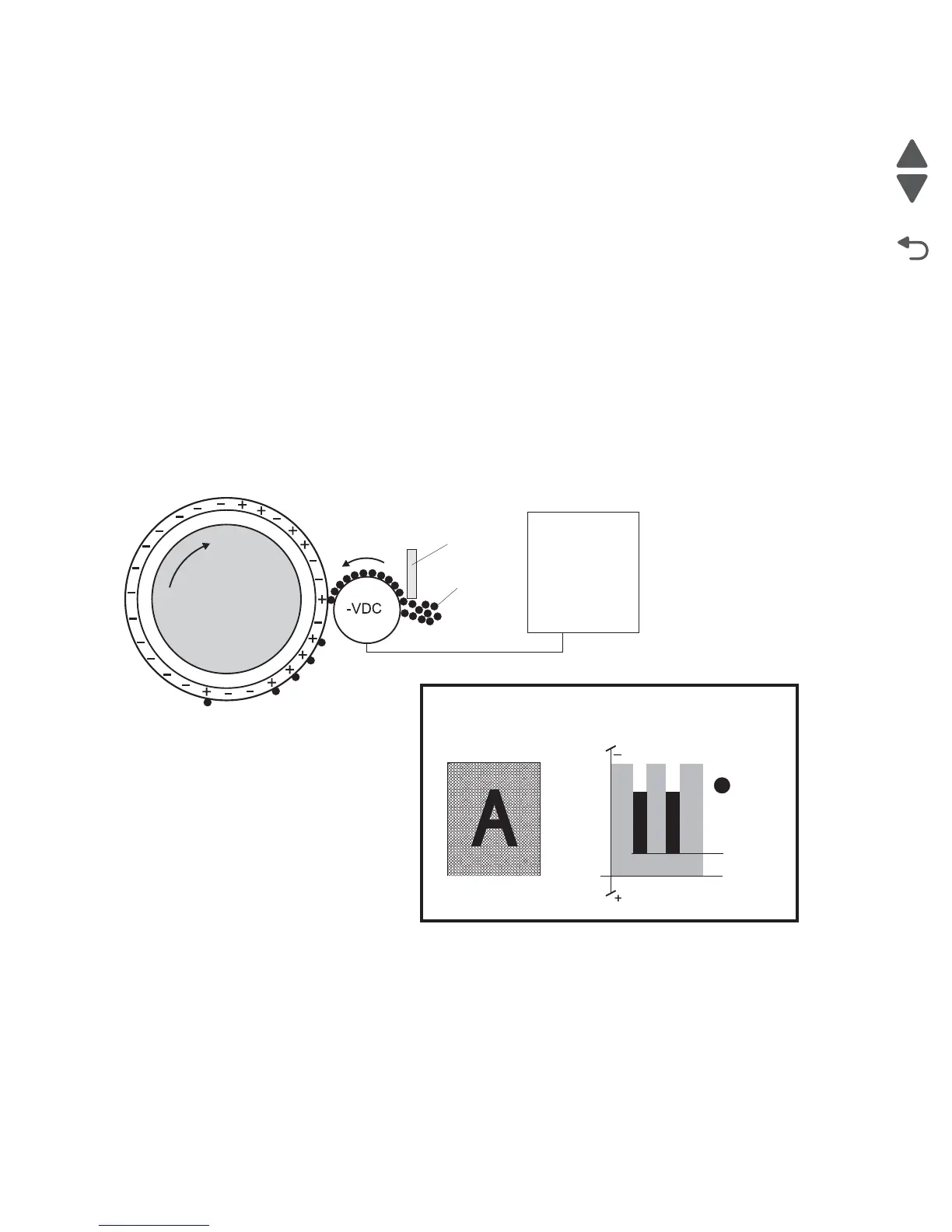3-56 Service Manual
5058-030
The toner contained within the PC cartridge has a magnetic property that causes it to adhere to the magnet roll.
The metering blade spreads the toner into a very thin layer on the magnet roll. Friction between the magnet roll
and the blade generates a small electrical charge that is transferred to the toner.
The surface of the magnet roll is made up of a thin sheet of conductive material. The HVPS supplies the magnet
roll with two voltages: a DC voltage and an AC voltage. The DC voltage is used to transfer toner from the
magnet roll to the surface of the drum. The AC voltage agitates the toner on the magnet roll, making toner
transfer easier.
The magnet roll maintains a negative DC electrical potential. Negatively charged areas of the drum have a lower
electrical potential, or a higher relative negative value than the magnet roll. Discharged areas of the drum have
a higher electrical potential, or a lower relative negative value, than the magnet roll. A discharged point on the
surface of the drum now appears less negative in relation to the negative charge on the magnet roll.
The toner adhering to the magnet roll is always in contact with the drum surface. When a less negative point on
the drum (a discharged area) comes in contact with the more negative charged toner on the magnet roll, toner
transfers from the magnet roll to that point on the drum.
The toner will attract only to the area of the photoconductor drum that was exposed to the printhead LED scan
line. This process would be similar to using glue to write on a can and then rolling it over glitter. The glitter sticks
to the glue but won’t stick to the rest of the can.
There is now a visible toner image on the drum surface. The image is called a developed image.
Service tips
• Never touch the surface of the developer roller with your bare hand. The oil from your skin
may cause a charge differential on the surface, and toner will not stick properly. The result
would be repeating blotches of voids/light print on a page. To solve this, the affected cartridge
must be replaced.
• If the developer roller is damaged, it will not contact the surface of the photoconductor
properly. The result could be repeating marks, thin vertical voids, or thin vertical lines of color
on the printed page. Check the surface of the developer for damage.
Magnetic
Roll
Metering
Blade
Toner
HVPS
DRUM
-VDC
Drum Surface
Voltage
Drum Surface
Image
Toner at
-VDC Developer
Bias value
Discharge
Level
0V
Visible Developed Image
